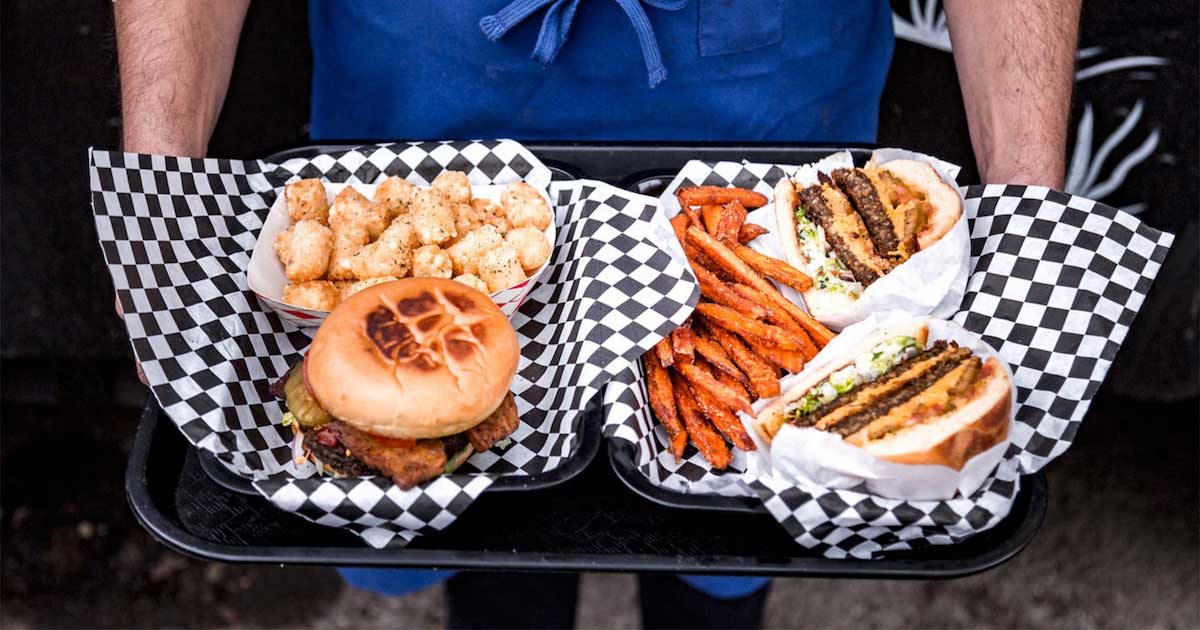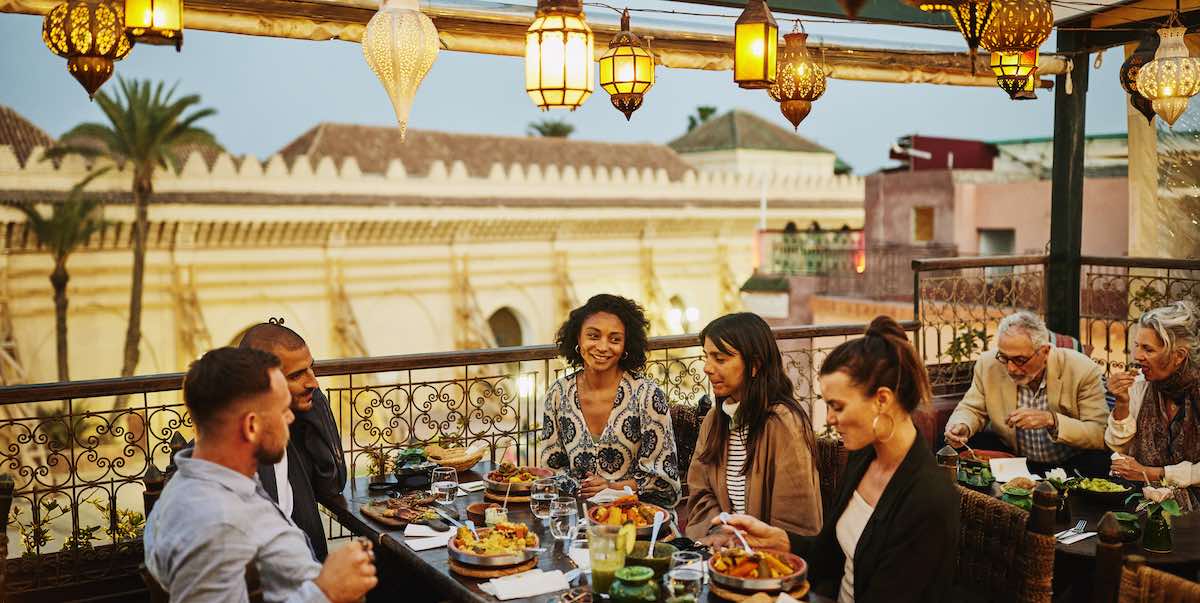When most people think about Texas restaurants, dreams of barbecue, steak and Tex-Mex undoubtedly come to mind. And while that wouldn’t necessarily be an inaccurate assumption (who doesn’t love a tangy barbecue sauce, a juicy steak or a pillowy taco?), what many visitors to Texas might not know is that the fare is evolving to be more inclusive.
While you’ll definitely find many tasty barbecue joints and steakhouses, the heart of food and beverage trends in foodie hubs such as Austin and Fort Worth is centered on approachable, sustainable and expansive options.
Austin
“While in Austin, you must pay homage to the diverse and expansive food culture,” says Katherine Wise, senior communications manager for Visit Austin.
Austin is a long-established hub for authentic tacos, nouveau and traditional pit masters and food trucks. But recently, there has also been a wave of new foodie delights.
“While Austin may be known for its legendary Tex-Mex, tasty breakfast tacos and juicy barbecue, there’s so much more to the capital city’s food history to explore,” Wise says. “Austin is home to many global cuisines including Cuban, Mediterranean, Ethiopian and Moroccan (just to name a few). But for many locals, Tex-Mex takes the crown. This blend of Mexican and Texas-style comfort food can be found on just about any street and will leave you wishing you had queso running through your veins.”
There are several new restaurants pushing Austin’s food scene even further. The recently opened DipDipDip Tatsu-ya offers a modern take on Japanese hot-pot dining, with meats, seafood and vegetables cooked in simmering pots of broth right at diners’ tables. Comedor serves cutting-edge Mexican cuisine, with dishes such as bone marrow tacos laced with smoked butter that simultaneously elevate Tex-Mex and bring it back to its roots by including a more traditional Latin earthiness.
According to Visit Austin, while there are many new and adventurous restaurants in the city, many planners are looking to bring the food truck culture to their events in order to provide much-requested variety.
“Many groups want their events to have an ‘Austiny’ flare with food, decor and entertainment,” Wise says. “Offering up a food truck event often comes up in conversation. This type of event offers a diverse option of local food for their attendees to experience.”
Austin event planners agree that there has been more of a demand to push the envelope for food and beverage, not only variation but also in presentation.
“I’ve definitely seen a heavy trend towards more healthy options with food allergies, like gluten-free and vegan. And I’ve also seen a trend towards the more unusual and more unique options, like interesting donut walls and food trucks,” says Alyssa Barnea, CMP (MPI Texas Hill Country Chapter), special event marketing manager for Haute Rock Creative. “So cool presentations that you wouldn’t ordinarily think about. I think there is more decor with food now. Food is more of an art than just something to eat.”
Food trucks often present the perfect opportunity to address dietary needs while giving participants food art. Barnea says her guests are often wowed by the freshness and availability of their favorite restaurants.
“We do a lot of food truck events,” she says. “We had a grilled cheese truck, which was not healthy at all, but was amazing. People love seeing their favorite restaurant go mobile. It’s really fresh because it’s not just catered, it’s catered on the spot. People love that as well. They love taking pictures with the food. They love the little chalkboard menus that they make for us.”
Fort Worth
Inclusion is the name of the game in Fort Worth, and the food scene is growing fast, particularly with ethnic cuisine such as Hao Tran and Dixya Bhattarai’s dumpling pop-up, which you can find at various bars and breweries around town. When asked about the trends they have seen in Fort Worth in recent years, Tran says that she has been seeing more diversity and choice, while still retaining an approachable, small-town feel.
“Having lived in Fort Worth for 30 years, we’ve gone from the traditional American comfort food and the cafeterias and transitioned to New American. The palettes of our customers are perhaps more discerning, and a growing, diverse population demands more culturally influenced cuisine,” she says. “We are seeing more Indian and Southeast Asian flavors of curry and spice. Vietnamese has been the staple but now it’s elevated to a higher standard. We see the refugee and immigrant population creating more mom-and-pop places that bring their own country’s dishes (e.g., Ethiopian and Jamaican).”
With all the new and diverse flavors and options, competition for customer attention has become fierce, but Tran and Bhattarai maintain that the competition remains friendly.
“Eating ‘local’ is taking on new connotations as we bridge across borders. It’s a conundrum of competition and choice,” Tran says. “When a new restaurant or concept is introduced, we flock to it. But the main staples of barbecue, tacos and Tex-Mex remain consistent. Fort Worth is a big city with a small-town feel and it’s the same in the F&B sector. There’s no doubt competition among food producers but [it’s] friendly, and competition is good for the consumer because they benefit from being enriched with the choices they have for their dining dollar.”
All of the focus on consumers has opened up many opportunities for niche dining experiences, and with more diners looking for sustainable options, event planners are having to find new ways to satisfy a more diverse crowd. And according to Dara Hall, CMP, CMM, executive vice president of Event Source Professionals Inc., this challenge is bringing about some experimentation for feeding large event crowds.
“We’re in this interesting intersection right now where large groups are requesting a lot of options, a lot of variety,” she says. “They want to understand that what they’re consuming is sustainable. They understand that there are limitations on this planet and that we need to be mindful of that. And there are diets that [run the gamut]. My thought is that you tell your attendees ahead of time that you’re being mindful: We heard you in the survey; we know you want options.
“Where I have a number of buffets, for instance, to feed 3,000, you have to have multiple stations. I am planning large signage in front of each display and one buffet will be for the keto diet. One buffet will be for the gluten free and such. But I’m going to try something different this time and have a kind of build-your-own salad with a number of different options—and they can use that downtime to network a little bit at the table.”
Hall also says that while executing a vision as large as this one, communication with the chef is of utmost importance, especially when it comes to sourcing new ideas for sustainable options.
“I set up a meeting with the chef and get to know them a little bit. They get to know me. So we become a team in this,” she says. “It isn’t me sitting down and creating a set of orders and giving it to them to fulfill. I want to give them my vision, I want them to participate and tell me what they’ve tried. That has worked. Certainly, steer me away from something that hasn’t worked and let’s collaborate on this. We’re not doing a program guide this year. We’re trying very, very hard to make sure that the footprint that we leave on the planet is caring and not ugly. And we will be sourcing locally as much as we can.”
Laredo
According to Selina Villarreal, marketing manager for the Laredo (Texas) CVB, the city has seen many requests for unique fare that fits all dietary needs.
“Recently there have been more dietary restrictions to take into account,” she says. “We want to make sure all attendees are taken care of and local food truck parks with a variety of different cuisines seem to be the best dining option. Guests can browse the variety of different options, whether it’s snack food, pizzas, burgers, vegetarian, gluten free, etc. Golondrina Food Park has outdoor dining and indoor dining available. They have expanded to not only include food trucks but restaurants on their property as well.”
Most of the flavors at the Golondrina Food Park are representative of the connection between Texas and Mexico. Dining in Laredo is a way to get a taste of Mexico and experience the beauty of East Texas and the Rio Grande.
“Being a border town, naturally the majority of meeting attendees are looking for that authentic Mexican cuisine, and without a doubt Laredo does not disappoint,” Villarreal says. “Dining at any local Mexican restaurant in town is as if you are dining in Mexico itself. The combination of spices utilized awaken all your senses and you’ll know immediately you are about to embark on a delicious adventure.”
Diverse diets are becoming more of a concern with participants, but planners are meeting the challenge by ensuring that no one has to worry whether they will have the kind of fare that they need. What’s more, Villarreal says that open buffets and food trucks provide more than just variety, they also provide another opportunity for networking and sharing with one another.
“From savory to sweet, hot dishes to cold snacks, there is an option to satisfy all attendees,” she says. “This setting also keeps the flow of networking going throughout the conference where not only are attendees tied down to speaking about work but now the doors have opened to discuss the dining selection they have made.”
Photo by Visit Austin.







